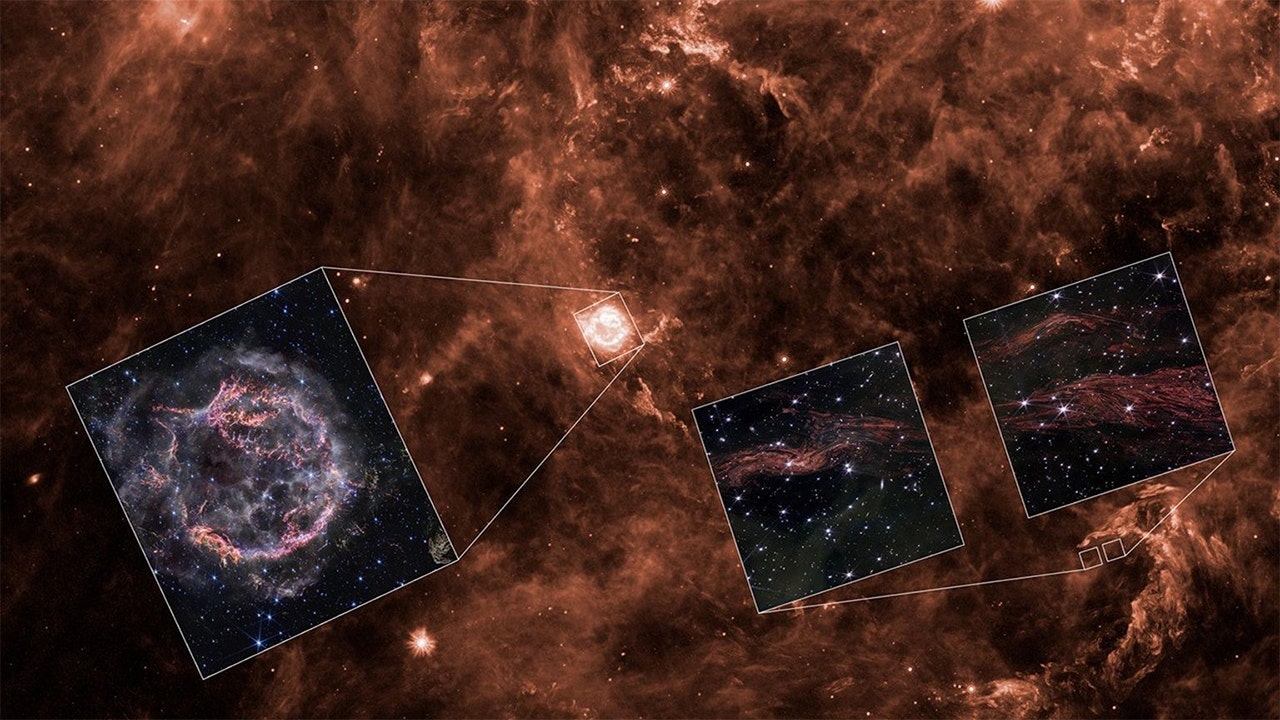Unveiling the Cosmos: Webb Telescope’s Stunning Capture of an Ancient Supernova
The unveiling of the cosmos has taken a giant leap forward with the James Webb Space Telescope’s (JWST) breathtaking images of one of the earliest supernovae ever detected. This remarkable discovery offers tantalizing insights into the universe’s evolution and highlights the advanced technology that makes such observations possible. In this article, we’ll delve into the significance of this supernova capture, what it reveals about cosmic events, and how it enriches our understanding of the universe.
Understanding Supernovae: The Cosmic Fireworks
Supernovae are not just spectacles of light; they are pivotal events in the life cycle of stars. When a massive star exhausts its nuclear fuel, it undergoes a catastrophic collapse followed by a dramatic explosion. This explosion ejects the outer layers of the star into space, creating what we see as a supernova. These cosmic fireworks play a crucial role in the universe, seeding the cosmos with heavy elements necessary for the formation of planets and life.
The Role of Supernovae in Cosmic Evolution
Supernovae are integral to the cosmic ecosystem. Here’s how they contribute to the broader narrative of the universe:
- Element Creation: The intense heat and pressure during a supernova synthesis heavier elements such as gold, silver, and uranium. These elements eventually become part of stars, planets, and even life forms.
- Galactic Recycling: The materials expelled by supernovae enrich the interstellar medium, providing the building blocks for new stars and planetary systems.
- Cosmic Distance Indicators: Certain types of supernovae, particularly Type Ia, serve as standard candles for measuring astronomical distances, helping to refine our understanding of the universe’s expansion.
The James Webb Space Telescope: A New Era of Astronomy
The James Webb Space Telescope, launched in December 2021, is a marvel of modern technology and represents a significant advancement over its predecessors. Equipped with a massive primary mirror and state-of-the-art instruments, JWST can observe the universe in infrared wavelengths. This capability allows it to see through cosmic dust and gas, revealing objects hidden from other telescopes.
Advanced Technology Behind JWST
JWST’s design incorporates several groundbreaking technologies:
- Large Mirror: The telescope’s primary mirror spans 6.5 meters, allowing for unparalleled light-gathering capability.
- Infrared Observation: By focusing on infrared wavelengths, JWST can detect the heat signatures of distant objects, providing insights into their composition and structure.
- Sunshield Technology: A massive sunshield protects the instruments from solar radiation, ensuring optimal operational temperatures.
These technological advancements have made JWST a powerful tool for exploring the distant universe, and its recent observations of the ancient supernova are a testament to its capabilities.
The Discovery of an Ancient Supernova
The discovery of an ancient supernova by the JWST is nothing short of extraordinary. The telescope has captured images of this stellar explosion, believed to have occurred billions of years ago. This ancient supernova not only illuminates the past but also provides clues about the conditions of the early universe.
What Does This Supernova Reveal?
The analysis of the supernova’s remnants offers several insights:
- Stellar Evolution: Understanding the characteristics of this supernova helps astronomers piece together the life cycles of early massive stars, which are crucial for understanding the formation of galaxies.
- Chemical Composition: By studying the light emitted from the supernova, scientists can determine the chemical elements produced during the explosion, shedding light on the elemental makeup of the early universe.
- Cosmic Expansion: Observations of this ancient event can refine models of cosmic expansion, helping to clarify the rate at which the universe is expanding.
The Significance of This Discovery
The stunning capture of this ancient supernova by the JWST marks a significant milestone in our quest to understand the cosmos. It provides a unique glimpse into an era long past, allowing researchers to connect the dots in the history of cosmic events.
Broader Implications for Astronomy
This discovery carries broader implications for the field of astronomy:
- Enhanced Understanding of Galaxy Formation: By studying ancient supernovae, astronomers can better understand how galaxies formed and evolved over billions of years.
- Insights into Dark Energy: The data gathered from supernova observations can contribute to our understanding of dark energy, the mysterious force driving the universe’s accelerated expansion.
- Technological Advancements: The successful capture of this supernova demonstrates the advancements in observational technology, paving the way for future discoveries.
Looking Ahead: The Future of Cosmic Exploration
The JWST has only just begun to scratch the surface of what lies beyond our world. As it continues to unveil the cosmos, astronomers are excited about the potential discoveries that await. The ability to peer deeper into the universe than ever before opens up new avenues of research and exploration.
Potential Future Discoveries
Some areas of interest for future exploration include:
- Exoplanet Atmospheres: JWST’s capabilities may allow for the study of atmospheres around distant exoplanets, potentially identifying conditions suitable for life.
- Early Galaxies: The telescope may uncover new information about the formation of the first galaxies, offering insights into the conditions of the early universe.
- Dark Matter Studies: Understanding the distribution of dark matter in galaxies could lead to breakthroughs in cosmology.
Conclusion: A New Chapter in Cosmic Understanding
The James Webb Space Telescope’s stunning capture of an ancient supernova is more than just a scientific achievement; it represents a new chapter in our understanding of the cosmos. As we unveil the mysteries of the universe, each discovery brings us closer to answering fundamental questions about our existence and the nature of the universe itself. The journey of exploration continues, and the possibilities are as limitless as the cosmos we seek to understand.
See more Future Tech Daily

